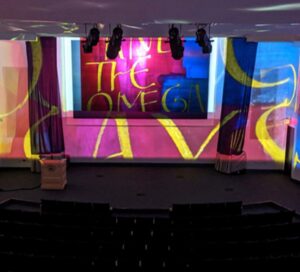Five Things to Consider When Selecting a New Projector
When it comes to producing large displayed images of 100” or more, projection technology is the front runner when it comes to cost, ease of installation, and system maintenance over time. While projector brightness is a key consideration, it is not the only factor you should be looking at when selecting a new projector. Here are some others that I recommend you should be looking at:
1. Projection Technology
If you have been in the industry for over a decade, you likely remember regularly being asked the question, “What’s better, plasma or LCD?” We no longer have that choice since the extinction of plasma displays, however, with projectors, we do have choices in the type of technology. The most common types of projection technology are 3 LCD, 1-Chip DLP, and 3-Chip DLP, with LCoS as a less common option for commercial projectors. While both are perfectly acceptable, 3 LCD typically will produce more vivid saturated colors and DLP may produce “blacker” blacks. Most noticeably with 1-Chip DLP, because of the color wheel, the brightness or lumen output when producing color images will often be significantly lower than the specified lumen rating. 3 LCD projectors will output the full specified brightness whether projecting full white or full color images. For more detailed information regarding color brightness, check out this article.
2. Resolution & Aspect Ratio
With projection, you have three common native aspect ratios to choose from (4:3, 16:9, and 16:10). According to PMA Research, over 75% of projectors sold have a native aspect ratio of 16:10, the majority of which are WUXGA with the remaining at WXGA. Additionally, they report that roughly 20% are native 16:9, with the majority being 1080p and a relatively small segment that are native 4K. This means there is still, albeit small, a percentage of native 4:3 projectors being sold. The important thing to remember here is that you want to match the aspect ratio of your screen to the native aspect ratio of your projector. Whether you are retrofitting a new projector to an existing screen, or installing an entirely new system, you need to be mindful of this. Also, be aware of the source signal you will be sending to the projector, especially if you need to display a 4K signal. While native 4K commercial projectors are expensive and choices are limited, there are many options that are native WUXGA (1920×1200) that support a 4K signal with pixel shifting technologies, like 4K enhancement.
 3. Image Position & Adjustment
3. Image Position & Adjustment
in a perfect world, you would not have to worry about projector placement relative to the projection screen, however, things like light fixtures and HVAC systems can prevent you from installing the projector dead center of screen. While most projectors offer horizontal and vertical keystone correction, you sacrifice some image quality when using this. A better option is to use a projector that features lens shift, so that the image can be repositioned horizontally and vertically without any digital manipulation of the image.
4. Throw Distance/Projector Placement
the projected image size will be determined by the available distance or “throw” you have in a particular space between the front of the projector lens and the projection screen surface. Unless the projector you are considering offers interchangeable lenses, as your desired image size increases, so does the required throw distance. A key specification of any projector or projection lens is the throw ratio. For a zoom lens, this is expressed as a range of two numbers representing distance compared to the number one, which represents your image width, for example (1.35-2.20:1). In this case, this specification states that the throw distance can range between 1.35 x the image width up to 2.20 x the image width. For a 10ft wide image, the throw distance then can be anywhere between 13.5ft – 22ft. It will be important to understand any limitations regarding projector placement relative to the screen and to choose a projector that will meet those requirements.
5. Connectivity
This may seem like a no-brainer since the majority of sources are now HDMI and pretty much every projector will include at least one HDMI input, however, in many cases the projector will be mounted just below the ceiling in the middle of a room. This could be a considerable distance away from the video source. Often, for cable lengths beyond 50ft HDBaseT HDMI extenders are used to send the audio, video, and control signals a long distance over a single Cat6 cable. Selecting a projector that includes an HDBaseT input can save you money on the extension hardware, simplify the installation, and reduce points of failure.
Whether you are looking to provide large images for a house of worship, create interactive experiences in classrooms, incorporate projected images into a presentation stage, integrate a command and control center, or deliver just about any type of large displayed visual image, a projector exists to get the job done.
What other things do you look for when specifying projectors? Let me know over on LinkedIn.










